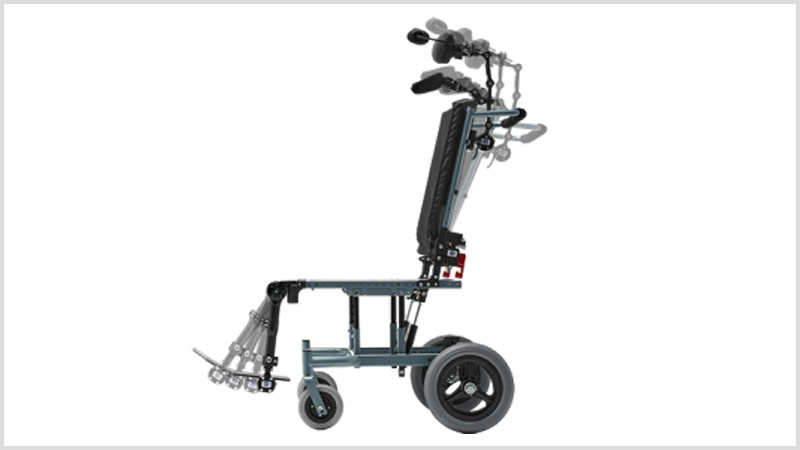Blog
Tone Management and Medical Interventions to Decrease Muscle Tone
This blog is part 5 of a series on Muscle Tone. Many medical interventions can impact wheelchair positioning for clients with increased muscle tone. This includes tone reduction medications, injections, surgeries, and orthotics.
Continue ReadingDiagnoses Characterized by Increased Muscle Tone
This blog is part 4 of a series on Muscle Tone. Many diagnoses are characterized by increased muscle tone. These include cerebral palsy (CP), traumatic brain injury (TBI), multiple sclerosis (MS), and some metabolic and genetic disorders.
Continue ReadingGeneral Seating Strategies used with People who have Increased Muscle Tone
This blog is part 6 of a series on Muscle Tone. In this blog, we will discuss general wheelchair seating strategies commonly used when working with someone who has increased muscle tone.
Continue ReadingMaintenance Time! The Dynamic Footrests
Dynamic Seating uses elastomers, springs, and/or hydraulics to absorb force, store energy, and return the client to a starting position. Instead of the wheelchair frame breaking, the dynamic component will wear and require replacement.
Continue ReadingLinds Rehabilitation Equipment Named Exclusive Australia Distributor of Seating Dynamics Wheelchair Components
Seating Dynamics announces the appointment of Linds Rehabilitation Equipment as our exclusive distributor for Australia effective 11/2021.
Continue ReadingDynamic Seating: Decreased Energy Consumption and Weight Gain
It has been established that Dynamic Seating absorbs and diffuses force. This intervention is often used to prevent client injury and equipment breakage, as well as to provide movement.
Continue ReadingDoes the Dynamic Head Support Hardware Require Maintenance?
In prior blogs, we addressed Dynamic Rocker Back interface maintenance and Dynamic Footrest maintenance. Today, we turn our attention to the Seating Dynamics Dynamic Head Support Hardware.
Continue ReadingThe Dynamic Seating Resistance Relationship: too much, too little, or just right!
Resistance to force allows the dynamic seating component to return to its starting position. If it is too low or too high, the component will not work effectively.
Continue ReadingThe Importance of Movement within a Wheelchair Seating System
Take a deep dive into why many are unable to move in a wheelchair and why it’s important to offer solutions that provide movement.
Continue ReadingMovement as a Human Right
Movement within wheelchair seating is not limited to movement between locations, but movement of the body itself, a right we can’t ignore.
Continue Reading
